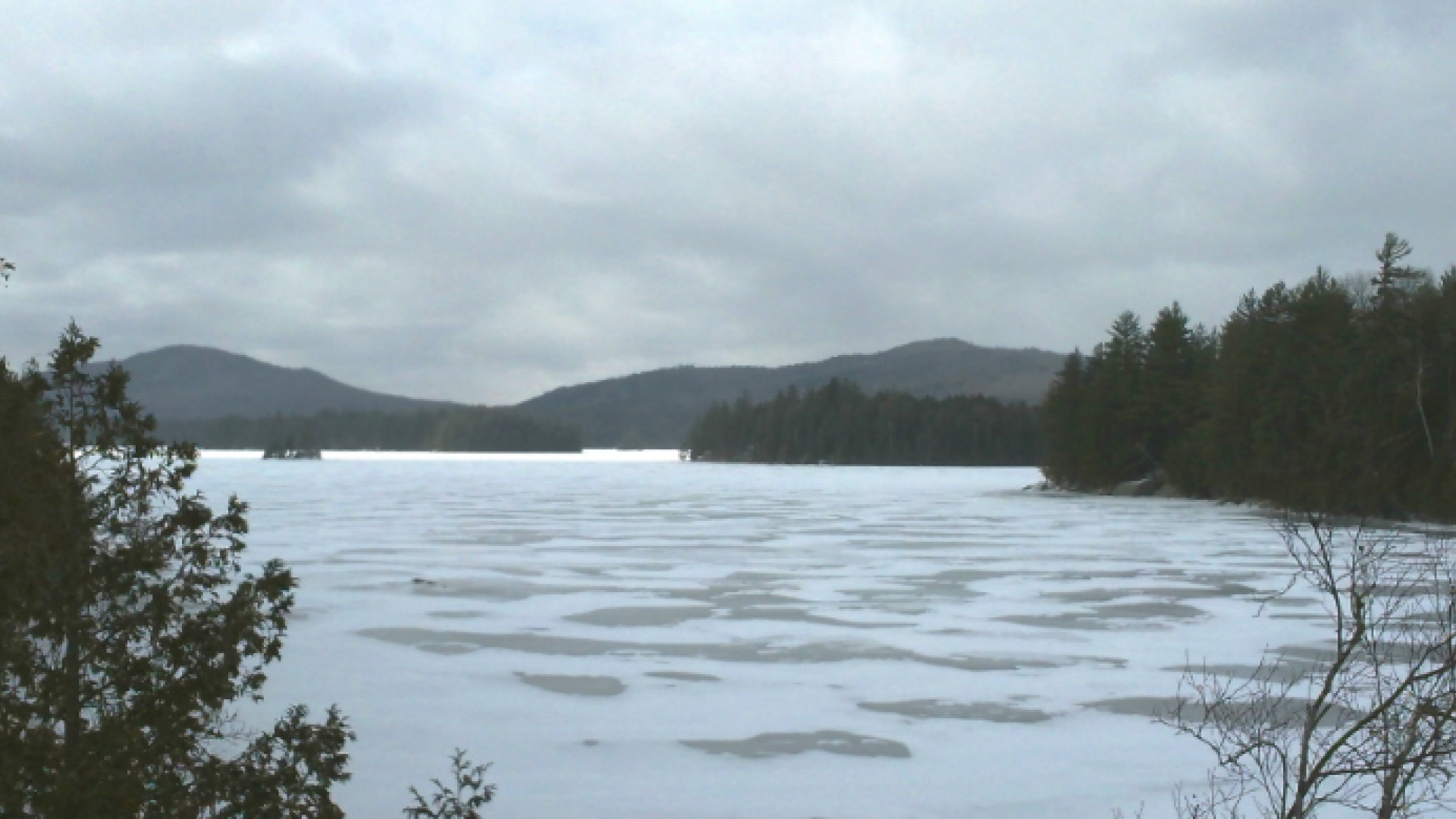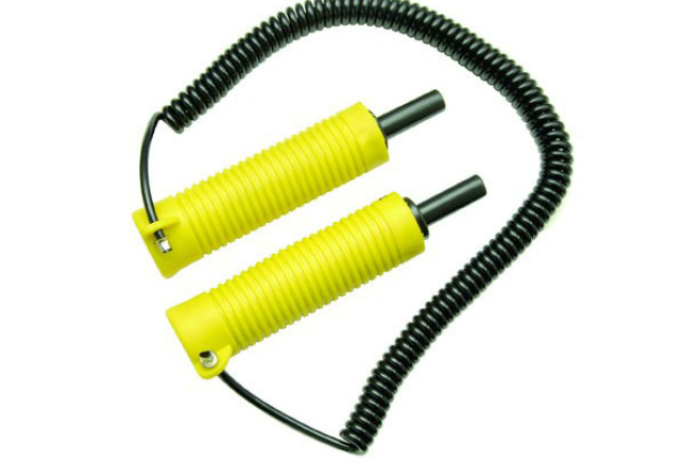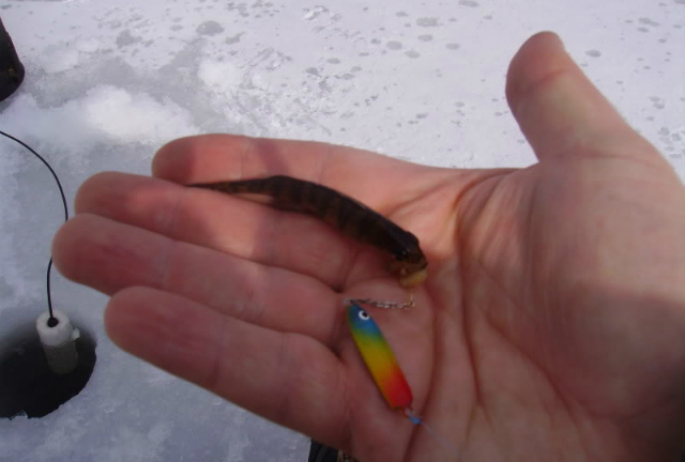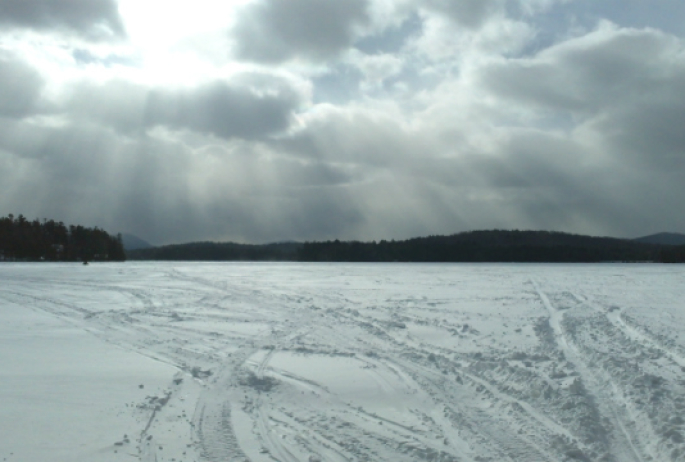We are a land of many lakes, be they liquid or solid. This gives Saranac Lake an abundance of extraordinary Adirondack ice fishing venues, from large and accessible to small and remote, or anything in between. So we are the place to explore all that ice fishing can offer... even when it gets extreme!
And out there, on the edges, things can get extremely interesting.
Here are the important elements when it comes to exploring the wilder side of ice fishing:
#1 EXTREME SAFETY
As recently as two decades ago, ice fishing was considered a mostly stationary sport. Once in place, preferably in one of those deluxe shanties with the heaters and bunks and windows, the angler was content to wait for what might wander by. The best places were scouted, known, and had developed a track record. This settled most questions about the fishing, and the safety.
But now, it's possible to add mobility to the sport in ways unavailable to the early ice angler. The good side is that we always tend to get more fish when we go to where the fish are. But in winter, this can lead us onto literally thin ice.
To Extreme Ice Anglers, "ice picks" means something designed to be worn.

The curly cord is threaded through both sleeves of a jacket, so that the yellow handles dangle within easy reach. If the worst happens and we fall through the ice, the sharp ends can be driven into the ice, out from the edge of the break, and help us out.
Here are the steps to take:
- Of course, the first step in any situation is Don't Panic. The shock of plunging into freezing water will subject our body to Cold Shock Phenomenon. This will last from one to three minutes, and the biggest challenge will be trying to breathe slowly and steadily.
- Turn toward the direction we came from. That’s probably the strongest ice. If we are away from the hole we fell through, look for contrasting color above us. In any conditions, that's where we broke through.
- Stretch hands and arms on the unbroken surface and deploy those rescue ice picks. We want to kick and float. We should not try to lever ourselves out as though the ice were a solid surface. Instead, kick our legs to lift our body, and try to swim ourselves up onto the ice, spreading our body weight out.
- Once out, stay lying down. Roll away from the hole. Only after reaching a stable surface should we try positions which let the cold water drain out of our clothes.
- Seek shelter and re-warming immediately, ideally in the form of professional care. In the rush of relief over getting out of the water it can feel like the emergency is over, but if cold blood moves too quickly from our extremities to our heart, that will be trouble.
- Always go out with a partner. But they should not endanger themselves to get a person out. Extending a rope or tree branch is a good move.
- Bring fire. Carry some matches in a watertight container, or better yet, a magnesium fire starter kit. Having this handy, on our person where it can't be lost, can make all the difference in the world in such an emergency.
We want everyone to be careful out there.
#2 EXTREME CLOTHING
When it's very cold, we must take it seriously. Deciding to go mobile and remote might mean leaving behind the security of the handy 4x4, the propane heater, and the warm shanty. We will need to bring the shelter with us, so to speak.
There are going to be lots of layers, ideally designed to vent our bodies when they get too warm. We don't want to get sweaty. The body heat we produce to make the sweat will quickly dissipate as the moisture gets cold... and conducts more cold directly to our core. Don't skimp at any point. The bottom layer is just as important as the top one.

Silk is an excellent base layer, topped with another insulator that wicks moisture away from our bodies. The final layer should be waterproof and wind-resistant. Gore-tex outside, with poly-fleece inside, is a favorite. Insulated snowmobile coveralls make an excellent "portable shanty."
Our extremities require extra care, because they are going to be in touch with the coldest parts of the environment on top of being smaller than our torsos, and having less natural insulation. So, go for the Frankenstein boots that are insulated and waterproof, the thermal socks, and warmers of any kind, from microwaved bags of rice to battery-operated gadgets.
Save some of those warmers for our pockets, too. Both gloves and mittens are not a bad idea, providing both warmth and dexterity as the situation calls for it. Wear a warm hat under that hood for similar flexibility. A scarf protects the neck and can be drawn up to cover our face. This will also warm the cold air we breathe.
Don't forget the sunglasses! Sun off the snow can make a winter day brighter than a summer one.
#3 EXTREME EQUIPMENT
We are now a self-contained, shanty-less ice angler. It's possible to backpack in minimal equipment such as a rod, hand auger, and containers of bait for the fish and food for the person. Strap on some snowshoes and there's no such thing as a pond too remote.
Just remember we will have to pack the fish out, unless we want to take a picture and release them. A twenty-pound pike will feel twice as heavy on a long trail. But if we plan to bushwhack through brush and unbroken trail, minimal is best.
A possible compromise is to add a sled to our equipment list. These slide along the snow and ice with a harness that isn't much heavier than a backpack, depending on what we put on our sled. The temptation is to add one of those pop-up shanties. They can make a huge difference on a windy day.

If we are really following the fish, we can get a sonar device that can be dropped through the hole and beams up a picture of the fan-shaped area below. How many fish do we see? Worth hanging around?
An extreme scouting expedition with minimal equipment is an excellent reconnoitering move. We can come back with more of what we need, and a better idea of the terrain we need to negotiate, if a place shows promise.
#4 EXTREME BAIT
For larger fish like trout, salmon, or pike, live bait works well. For panfish and smelt, it is recommended to pretend to be zooplankton. Not us, but our jigs; the best simulate the tiny, multi-colored animals such fish feed on.

The tinier and more colorful the better; many of these jigs are no larger than a dime. Using a two pound test line with such tiny jigs creates more subtle, lifelike movements. This is more likely to fool the fish.
#5 EXTREME LOCATION
Our first impulse might be to think of small ponds reached by wilderness treks, but here in the Adirondack lake country, extreme can be much closer than that. Our Saranac Lake Chain is popular with boaters in the summer, but equally welcoming to ice anglers in the winter. These broad expanses (above) offer an intriguingly irregular shoreline, with abundant bays and islands which shelter fish.

We can feel the wilderness even close to town. Because our town is nestled right into the wild. Here in the Adirondacks, it's easy to Go Extreme.
Explore our ice fishing spots. We highly recommend getting an extreme guide. We'll be ready for a hot meal when we get off the ice, and a big warm bed, too.










